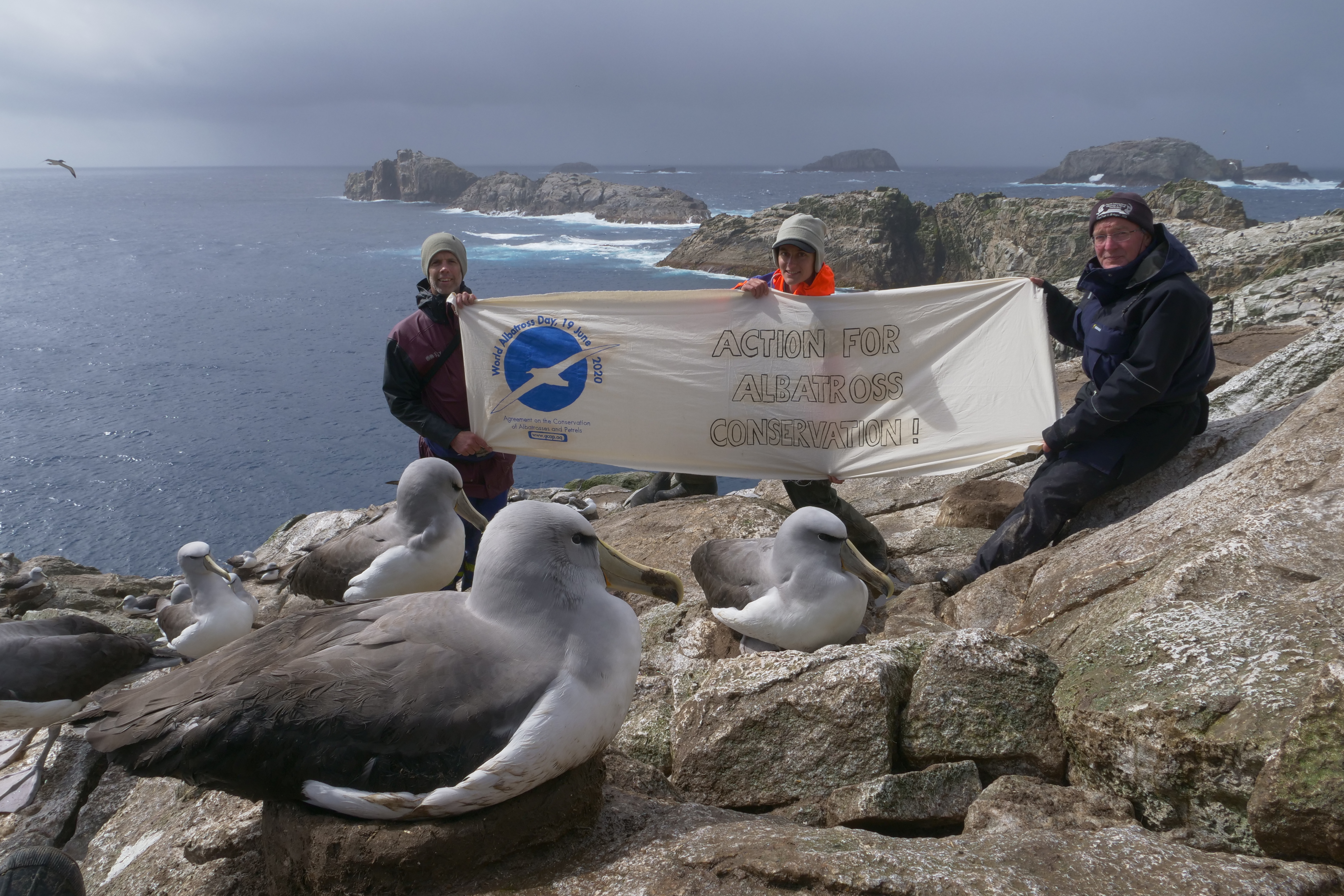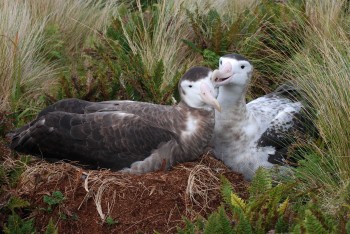Ben Dilley (FitzPatrick Institute of African Ornithology, University of Cape Town, South Africa) and colleagues have published in the journal Antarctic Science on methods of surveying burrow-breeding petrels, including ACAP-listed and globally Vulnerable White-chinned Petrels Procellaria aequinoctialis, at Marion Island.
The paper’s abstract follows:
“We compared systematic and random survey techniques to estimate breeding population sizes of burrow-nesting petrel species on Marion Island. White-chinned (Procellaria aequinoctialis) and blue (Halobaena caerulea) petrel population sizes were estimated in systematic surveys (which attempt to count every colony) in 2009 and 2012, respectively. In 2015, we counted burrows of white-chinned, blue and great-winged (Pterodroma macroptera) petrels within 52 randomized strip transects (25 m wide, total 144 km). Burrow densities were extrapolated by Geographic Information System-derived habitat attributes (geology, vegetation, slope, elevation, aspect) to generate island-wide burrow estimates. Great-winged petrel burrows were found singly or in small groups at low densities (2 burrows ha−1); white-chinned petrel burrows were in loose clusters at moderate densities (3 burrows ha−1); and blue petrel burrows were in tight clusters at high densities (13 burrows ha−1). The random survey estimated 58% more white-chinned petrels but 42% fewer blue petrels than the systematic surveys. The results suggest that random transects are best suited for species that are widely distributed at low densities, but become increasingly poor for estimating population sizes of species with clustered distributions. Repeated fixed transects provide a robust way to monitor changes in colony density and area, but might fail to detect the formation/disappearance of new colonies.”

White-chinned Petrels, photograph by Ben Phalan
Reference:
Dilley, B.J., Hedding, D.W., Henry, D.A.W., Rexer-Huber, K., Parker, G.C., Schoombie, S., Osborne, A. & Ryan, P.G. 2019. Clustered or dispersed: testing the effect of sampling strategy to census burrow-nesting petrels with varied distributions at sub-Antarctic Marion Island. Antarctic Science doi:10.1017/S0954102019000415.
John Cooper, ACAP Information Officer, 19 November 2019

 English
English  Français
Français  Español
Español 


